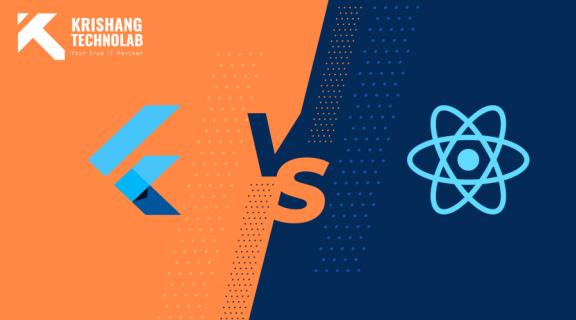Developers are always searching for more productive and efficient ways to create cross-platform applications in the ever expanding world of mobile apps. This is where frameworks such as Flutter and React Native come into play, offering the capability to create mobile applications for several platforms with just one codebase. Which one, though, should you pick—Flutter or React Native? In order to decide which mobile app development framework is superior, we will examine the main features, development process, platform support, performance and testing, as well as the popularity and acceptance of Flutter vs React Native.
What is Flutter?
Google developed the open-source Flutter mobile app development framework. Since its initial release in 2017, it has grown in popularity among developers because to its quick development time and eye-catching user interfaces. A few well-known apps created with Flutter include Alibaba, Hamilton, and Google Ads.What is React Native?
Facebook originally released React Native, an open-source framework for creating mobile apps, in 2015. It is built on top of the well-known React JavaScript framework, and major companies like Instagram, Tesla, and Skype have embraced it.
Cross-Platform Application Development Framework Overview
With cross-platform app development frameworks, programmers may create apps that run smoothly on a variety of platforms, such as the web, iOS, and Android. Organizations seeking greater reach and consistent user experiences across platforms may find cost-effective solutions with these frameworks, which also streamline the app development process and reduce time to market.
The need for mobile apps is growing, technological advancements are driving the market for cross-platform app development frameworks, and app developers are placing more focus on efficiency and scalability.
The Top 5 Frameworks for Developing Cross-Platform Applications
Framework 1 : Flutter
Let's take a look at the Flutter review before determining the final outcome of the Flutter vs. React Native comparison. Flutter is a cross-platform programming framework that was developed by Google and has gained a lot of popularity very rapidly. Creating natively designed desktop, web, and mobile apps with a single codebase is helpful for developers.
Basic Features and Advantages
Hot Reload : Developers may view real-time changes with Hot Reload, which eliminates the need to restart the application.
Rich Widget Library : With the Rich Widget Library, you can develop UIs that are aesthetically pleasing by choosing from a variety of customisable widgets.
Efficiency: Its direct compiler to native code results in excellent efficiency.
Framework 2: React Native
Another strong competitor in the field of cross-platform development is Facebook's React Native. It can be used to create mobile applications for iOS and Android by utilizing JavaScript and React.
Basic Features and Advantages
Reusable Components: Provides developers with the ability to reuse parts on several platforms.
Strong Community Support: Numerous third-party plugins and libraries are available.
Hot Reloading: It allows for real-time changes while developing, much as Flutter.
Framework 3 : Xamarin
Using C# and.NET, developers may create cross-platform apps with Microsoft's Xamarin offering. It is renowned for its capacity to produce applications with native user interfaces and performance.
Basic Features and Advantages
Native User Experience: Offers authentic native app experience using native UI controls.
Shared Codebase: Enables cross-platform code sharing up to 90% of the time.
Integration with Visual Studio: An efficient development process is achieved by a smooth integration with the well-known IDE.
Framework 4 : Ionic
With the use of web technologies like HTML5, CSS, and JavaScript, hybrid mobile apps may be created with the help of the open-source Ionic framework. It is intended to function with well-known frameworks like as Vue, React, and Angular.
Basic Features and Advantages
Vast library of plugins : A vast library of plugins is available to access native device functionality, offering a wide range of options.
One Codebase: Develop it once, then deploy it across several systems.
Flexible UI components : Flexible user interface components are pre-made elements that can adjust to the design standards of many platforms.
Framework 5: Multiplatform Kotlin
Flutter vs React Native: Which One to Choose for Your App?
Key Factors to Consider
1. Programming Language
2. Performance
3. UI Components
4. Development Speed
5. Community and Ecosystem
6. Learning Curve
7. State Management
8. Platform Support
9. Testing and Debugging
10. Deployment
Conclusion
Flutter is a viable React Native substitute to take into consideration simply because it is supported by Google, even though React developers are more readily available.
Whereas React Native development depends on WebView and a JavaScript layer that significantly slows down React Native mobile apps, Flutter cross-platform mobile development uses the Dart compiler.








